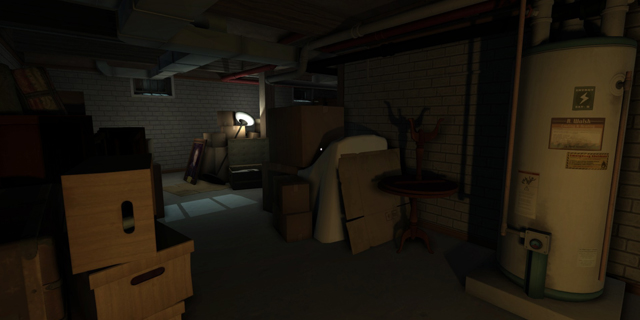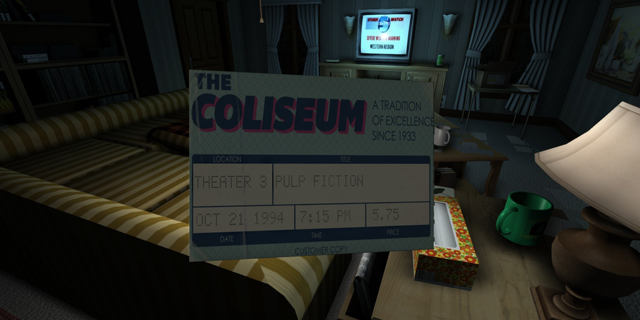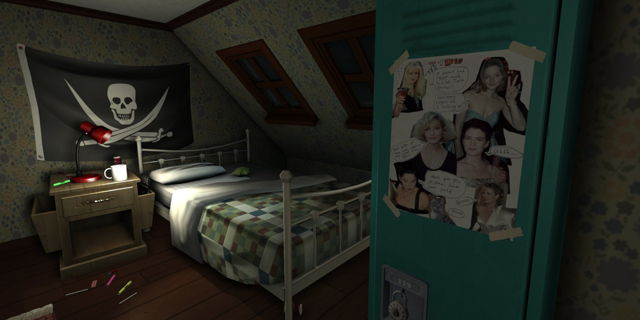
I moved recently, which gave me the opportunity to look through my old valuables. I say valuables, but these things are more like “junk that told a story:” an old action figure my uncle gave me, a cheap ring that represents an old relationship or even a scrap of a paper I thought I threw away laying out my plans for a weekend gathering with friends. If you live in a place for long enough, that place will begin to gather more than dust; it will gather memories. The first game from the Fullbright Company, Gone Home, gives you the opportunity to examine the lives of a family by simply letting you explore their home. As a result, it spins a meaningful yarn that pushes the art of storytelling in games forward.
The story follows a young woman, Katie, who returns home to visit her family after spending a year overseas. You are given a brief bit of dialogue that sets up Katie’s story, and then you are free to explore the house, which happens to be mysteriously empty. You are left to your own devices to piece together the story of characters you will slowly grow to love (or at least better understand). It’s remarkable how Gone Home presents the tale of this family simply by allowing you put the puzzle together yourself, rather than shoving the plot down your throat. Not that cutscenes are bad, but it’s always refreshing when a game presents its narrative in a nontraditional way.

Best of all, the story it does tell is an excellent one. I won’t give any more than the sparse information I’ve already provided, but it’s heartfelt, smartly written and full of moments that will stick with you for quite some time. Thanks to the many little details scattered throughout, there are so many other stories that reflect the nature of the family in some intriguing ways. Again, I’m avoiding specifics for a very important reason: this is a story you need to experience yourself.
The mechanics are simple. You are given a map, a few inventory items and an entire house to move around in, complete with plenty of highly-detailed rooms, objects to examine and even some secrets to discover. As you move from one area to the next, the map will fill in, making it easier to venture around without worrying about getting lost. As new details are discovered, they will be marked on the map for reference later, giving you ample reason to go back to rooms you’ve already visited to discover something new. Outside of interacting with the objects in the house, there isn’t much else to Gone Home’s gameplay, but it manages to exceed elsewhere.
Since the game is set in the mid-‘90s, you are left with a treasure trove of nostalgic goodies to discover. You’ll find (fake) Super Nintendo cartridges, VHS tapes with recorded movies and X-Files episodes and plenty of magazines featuring the celebrities and trends of the times. If you grew up during this era, you’ll find a lot to love about the small, rich details that make this house feel like an actual home, not just some fake house that was created for a game. Since this is a title so focused on exploration, this is an important aspect to nail down, and it does so with grandeur.

There’s much more to be said about Gone Home, but doing so would devalue what makes this experience so memorable to begin with. At its core, it’s a simple adventure game with minimal puzzles that focuses entirely on providing a meaningful narrative. It presents yet another poignant example of how we can push the boundaries of our medium forward in exciting ways. It won’t win any awards for gameplay mechanics, but this is a game that will be discussed for many years to come.
If anything, it provided me with a good reason to keep that old stuff around; they may be worthless to most people, but to me, the stories they tell are more valuable than anything else.
Pros: Manages to tell a meaningful story through background details, plenty of clever secrets to discover
Cons: Short length might disappoint some



















